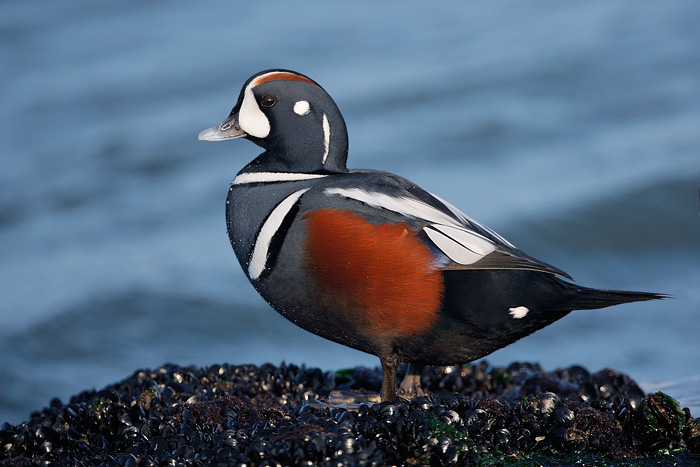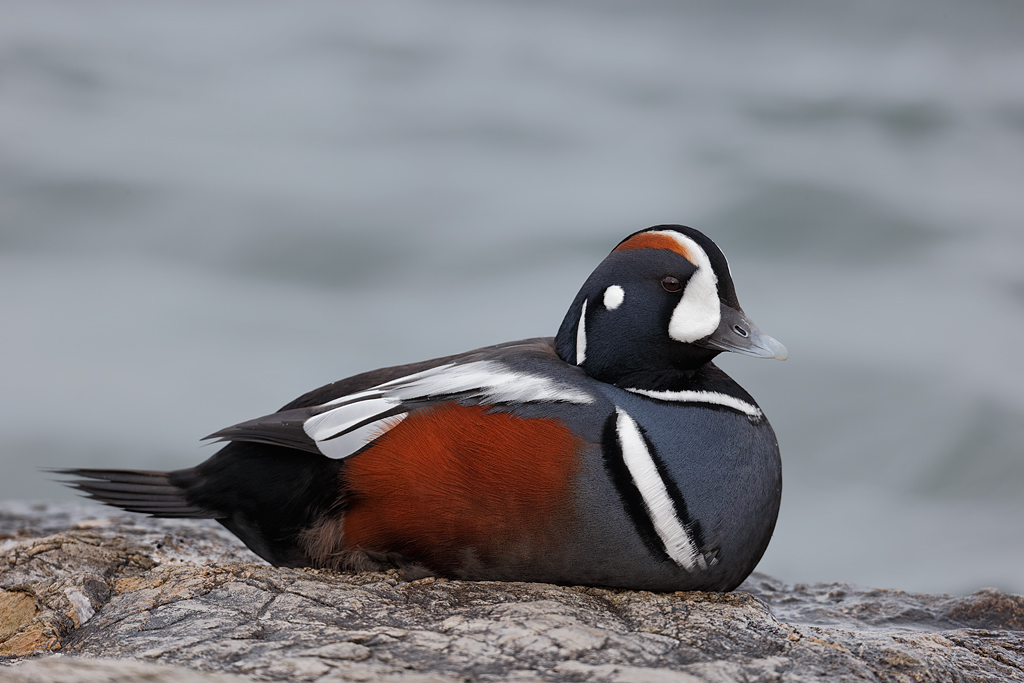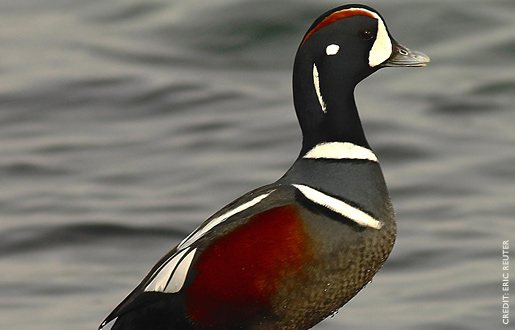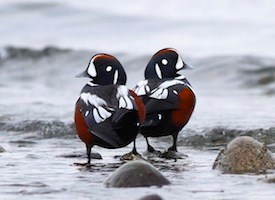
Histrionicus histrionicus
SUBFAMILY
Merginae
TAXONOMY
Anas histrionicus Linnaeus, 1758, America = Newfoundland ex
Edwards. Monotypic.
OTHER COMMON NAMES
English: Harlequin; French: Arlequin plongeur; German: Kragenente;
Spanish: Pato Arlequнn.
PHYSICAL CHARACTERISTICS
15.0–20.1 in (38–51 cm); 1.2–1.5 lb (540–680 g). Distinctive
white markings on head, chest, and back.
DISTRIBUTION
Eastern Siberia from Lake Baikal north to about 68° and east
to central western Alaska and Yukon. South in North America
to California and east to southern Baffin Island and Quebec.
Greenland, and Iceland. Winters along coasts of Kamchatka,
Bearing Sea islands, Japan, Korea, China, California, and from
southern Labrador south to Long Island.
HABITAT
Fast flowing rocky rivers during the breeding season and rocky
coastlines during the nonbreeding season.
BEHAVIOR
Loosely territorial and aggressive. Males guard their mate. Return
to the same breeding area each year. Migratory.
FEEDING ECOLOGY AND DIET
Has mostly an animal diet of invertebrates and some fish.
Mostly dives for food, but also dabbles, up-ends, and dips its
head in shallow water.
REPRODUCTIVE BIOLOGY
Seasonally monogamous until midincubation. Same birds may
re-pair in the following season. Breeding begins May–Jun. The
nest is well hidden on the ground. Commonly lays 5–7 eggs;
incubation 27–29 days; fledging c. 60–70 days; becomes sexually
mature at 2 years.
CONSERVATION STATUS
Not threatened. Locally common with stable populations.
SIGNIFICANCE TO HUMANS
None known.
Photo Gallery of - Harlequin duck




 Animalia Life
Animalia Life